Making Mooncakes
September 10th, 2011
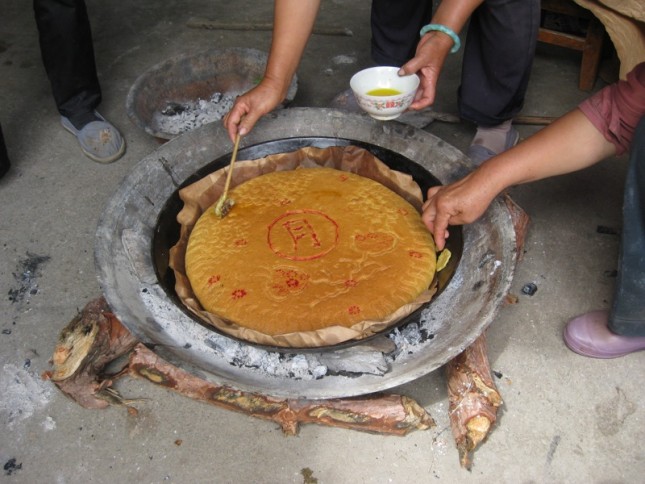
This morning, I woke to the sound of rain, birds chirping, and a mule braying in the small farming town of Shaxi, nine hours north of Kunming. After breakfast, my host, Mr. Wu, sent me to his neighbor’s farmhouse to watch the family make mooncakes in anticipation of the Mid-Autumn Festival on Monday. The women of the family, presumably sisters-in-law, had gathered in the courtyard. Because mooncakes are only made once a year, the family shares the tools used to make them, and they work on them together, taking half a day or longer, making enough for all the branches of the family to enjoy on the holiday.
Unlike the small, thick mooncakes I’ve seen in the city, the mooncakes made in Shaxi are thin and wide and served cut up into pieces.
First, the women made large batches of dough, using wheat flour, oil, and honey.

When the dough was thick and sticky, like sugar cookie dough, they divided it into 6ths and kneaded each piece. When the texture was smooth, they rolled out two rounds, one slightly smaller than the other.

On the large round, they spread a thin filling of crushed nuts, sugar, and seasonings.
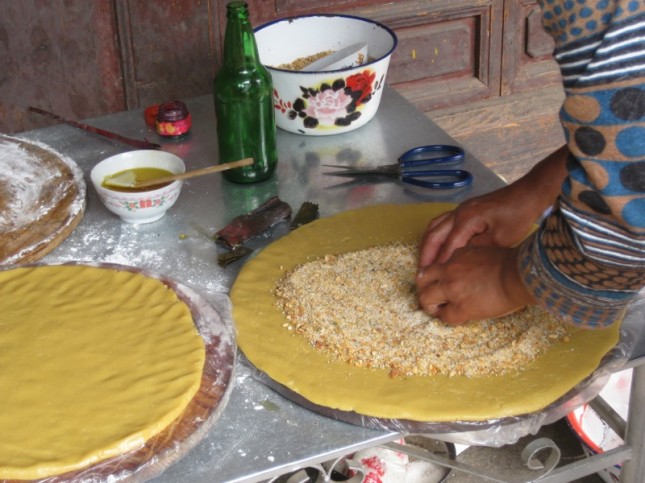
They then placed the smaller round on top of the filling, and folded the edges of the bottom round over to seal them together.
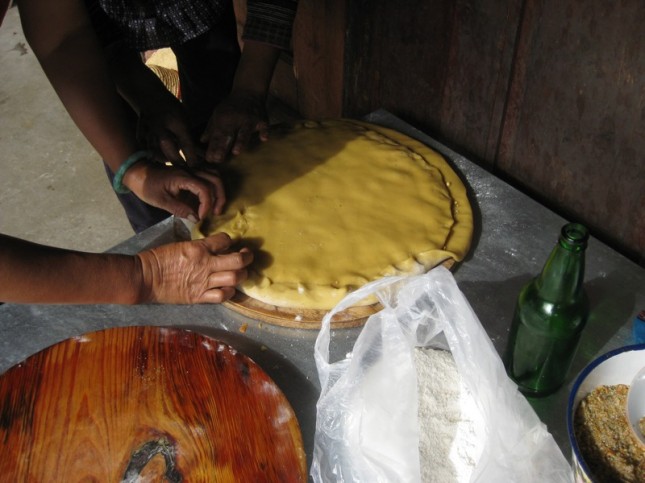
Once the rounds were sealed together, they flipped the cake so that they had a nice, smooth top to work with. They brushed the top with oil, then used a series of small metal tools to crimp the dough, creating traditional designs and pictures of fruit, often accompanied by the image of the moon.

As a last bit of decoration, they then used a thin, pen-like tool dipped in food coloring to add a little bit of red to the design.

While some of the women were making the cakes, others were building a fire in a huge wok and letting it burn down until only embers remained. When the cake was ready, they nestled a two foot wide iron skillet in the embers, and slid the cake into it.
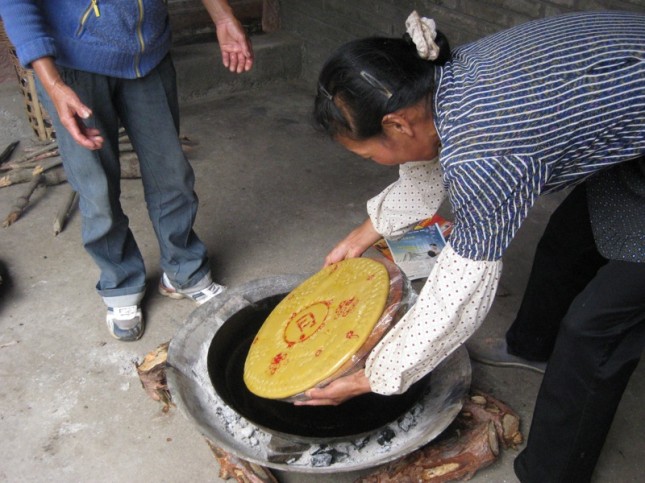
A flat metal tray with a tripod-like handle was also filled with embers and burning logs and placed on top of the skillet to create an oven.

Part way through the baking, they checked the cake’s progress and covered any parts that were cooking too fast with pieces of paper so that they wouldn’t burn.
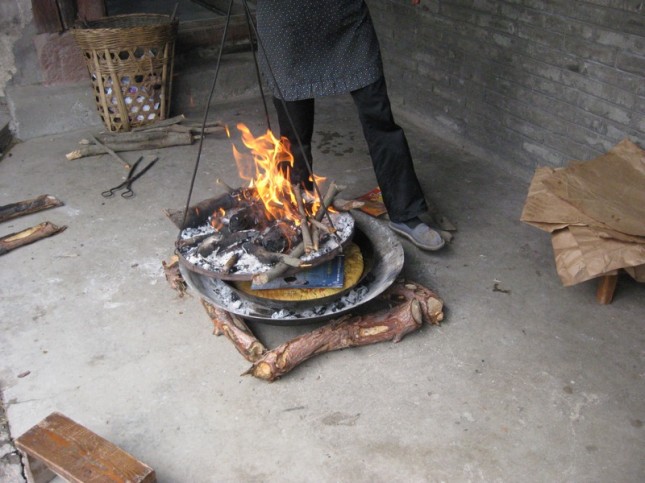
Finally, when the cake was done, they removed it from the pan using a method I would never have imagined: they placed a basket on top of the cake, then flipped the whole thing onto one of the women’s heads and lifted off the skillet.
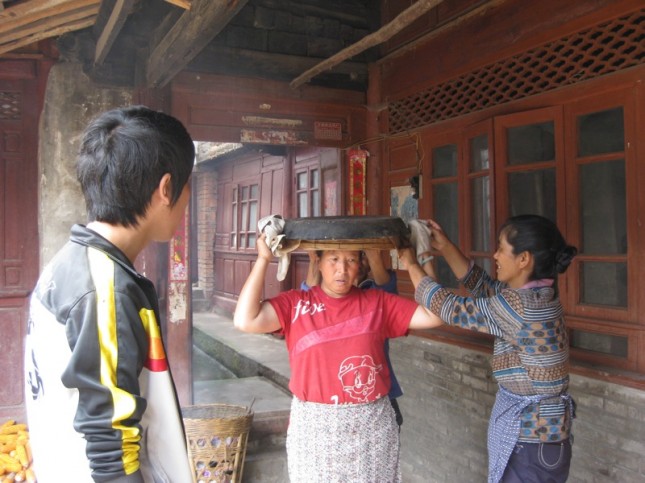
Before I left, the women insisted that I taste one of the cakes and cut me a few pieces from one that hadn’t cooked properly. It was warm and crumbly and cookie-like, and tasted of peanuts and anise. Though I’ve never really liked mooncakes before, I will now look forward to the Mid-Autumn festival and the chance to have these delicious cakes.
Photos: Georgia Freedman



